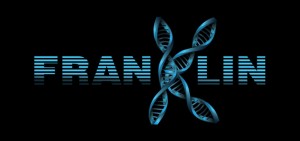John Polanyi
Professor
University of Toronto, Canada
John Polanyi, educated at Manchester University, England, was a postdoctoral fellow at Princeton University and at the National Research Council of Canada. He is a faculty member in the Department of Chemistry at the University of Toronto, a member of the Queen’s Privy Council for Canada (P.C.), and a Companion of the Order of Canada (C.C.). His awards include the 1986 Nobel Prize in Chemistry. He has written extensively on science policy, the control of armaments, peacekeeping and human rights.
Charles Lieber
Professor Charles M. Lieber
Mark Hyman Professor of Chemistry
Department of Chemistry and Chemical Biology
Harvard University
Charles M. Lieber is regarded as a leading chemist worldwide and recognized as a pioneer in the nanoscience and nanotechnology fields. He completed his doctoral studies at Stanford University and currently holds a joint appointment in the Department of Chemistry and Chemical Biology at Harvard University, as the Mark Hyman Professor of Chemistry, and the School of Engineering and Applied Sciences. Lieber is widely known for his contributions to the synthesis, understanding and assembly of nanoscale materials, as well as the founding of two nanotechnology companies: Nanosys and Vista Therapeutics.
Lieber’s achievements have been recognized by a large number of awards, including the Feynman Prize for Nanotechnology (2002), World Technology award in Materials (2003 and 2004) and the Wolf Prize in Chemistry (2012). He has published more than 350 papers in peer-reviewed journals and is the primary inventor on over 35 patents.
Arthur Carty
Professor & Executive Director [Waterloo Institute for Nanotechnology]
University of Waterloo, Canada
Arthur Carty has a PhD in inorganic chemistry from the University of Nottingham in the UK. He is currently the Executive Director of the Waterloo Institute for Nanotechnology and research professor in the Department of Chemistry at the University of Waterloo.
Previously, Dr. Carty served in Canada as the National Science Advisor to the Prime Minister and President of the National Research Council (Canada). He was awarded the Order of Canada and holds 14 honorary doctorates.
His research interests are focused on organometallic chemistry and new materials. [Dr. Carty is chair of The Expert Panel on the State of Canada’s Science Culture; an assessment being conducted by the Canadian Council of Academies as per my Feb. 22, 2013 posting and Dr. Carty is giving a Keynote lecture titled: ‘Small World, Large Impact: Driving a Materials Revolution Through Nanotechnology’ at the 2014 TAPPI (Technical Association for the Pulp, Paper, Packaging and Converting Industries) nanotechnology conference, June 23-26, 2014 in Vancouver, Canada as per my Nov. 14, 2013 posting.]
William Milne
Professor
University of Cambridge, UK
Bill Milne FREng,FIET,FIMMM has been Head of Electrical Engineering at Cambridge University since 1999 and Director of the Centre for Advanced Photonics and Electronics (CAPE) since 2005. In 1996 he was appointed to the ‘‘1944 Chair in Electrical Engineering’’. He obtained his BSc from St Andrews University in Scotland in 1970 and then went on to read for a PhD in Electronic Materials at Imperial College London. He was awarded his PhD and DIC in 1973 and, in 2003, a D.Eng (Honoris Causa) from University of Waterloo, Canada. He was elected a Fellow of The Royal Academy of Engineering in 2006. He was awarded the J.J. Thomson medal from the IET in 2008 and the NANOSMAT prize in 2010 for excellence in nanotechnology. His research interests include large area Si and carbon based electronics, graphene, carbon nanotubes and thin film materials. Most recently he has been investigating MEMS, SAW and FBAR devices and SOI based micro heaters for ( bio) sensing applications. He has published/presented ~ 800 papers in these areas, of which ~ 150 were invited. He co-founded Cambridge Nanoinstruments with 3 colleagues from the Department and this was bought out by Aixtron in 2008 and in 2009 co-founded Cambridge CMOS Sensors with Julian Gardner from Warwick Univ. and Florin Udrea from Cambridge Univ.
Shuit-Tong Lee
Institute of Functional Nano & Soft Materials (FUNSOM)
Collaboration Innovation Center of Suzhou Nano Science and Technology
College of Nano Science and Technology (CNST)
Soochow University, China
Email: apannale@suda.edu.c
Prof. Lee is the member (academician) of Chinese Academy of Sciences and the fellow of TWAS (the academy of sciences for the developing world). He is a distinguished scientist in material science and engineering. Prof. Lee is the Founding Director of Functional Nano & Soft Materials Laboratory (FUNSOM) and Director of the College of Chemistry, Chemical Engineering and Materials Science at Soochow University. He is also a Chair Professor of Materials Science and Founding Director of the Center of Super-Diamond and Advanced Films (COSDAF) at City University of Hong Kong and the Founding Director of Nano-Organic Photoelectronic Laboratory at the Technical Institute of Physics and Chemistry, CAS. He was the Senior Research Scientist and Project Manager at the Research Laboratories of Eastman Kodak Company in the US before he joined City University of Hong Kong in 1994. He won the Humboldt Senior Research Award (Germany) in 2001 and a Croucher Senior Research Fellowship from the Croucher Foundation (HK) in 2002 for the studies of “Nucleation and growth of diamond and new carbon based materials” and “Oxide assisted growth and applications of semiconducting nanowires”, respectively. He also won the National Natural Science Award of PRC (second class) in 2003 and 2005 for the above research achievements. Recently, he was awarded the 2008 Prize for Scientific and Technological Progress of Ho Leung Ho Lee Foundation. Prof. Lee’s research work has resulted in more than 650 peer-reviewed publications in prestigious chemistry, physics and materials science journals, 6 book chapters and over 20 US patents, among them 5 papers were published in Science and Nature (London) and some others were selected as cover papers. His papers have more than 10,000 citations by others, which is ranked within world top 25 in the materials science field according to ESI and ISI citation database.
Sergej Fatikow
Full Professor, Dr.-Ing. habil.
Head, Division for Microrobotics & Control Engineering (AMiR)
University of Oldenburg, Germany
Professor Sergej Fatikow studied electrical engineering and computer science at the Ufa Aviation Technical University in Russia, where he received his doctoral degree in 1988 with work on fuzzy control of complex non-linear systems. After that he worked until 1990 as a lecturer at the same university. During his work in Russia he published over 30 papers and successfully applied for over 50 patents in intelligent control and mechatronics. In 1990 he moved to the Institute for Process Control and Robotics at the University of Karlsruhe in Germany, where he worked as a postdoctoral scientific researcher and since 1994 as Head of the research group “Microrobotics and Micromechatronics”. He became an assistant professor in 1996 and qualified for a full faculty position by habilitation at the University of Karlsruhe in 1999. In 2000 he accepted a faculty position at the University of Kassel, Germany. A year later, he was invited to establish a new Division for Microrobotics and Control Engineering (AMiR) at the University of Oldenburg, Germany. Since 2001 he is a full professor in the Department of Computing Science and Head of AMiR. His research interests include micro- and nanorobotics, automated robot-based nanohandling in SEM, AFM-based nanohandling, sensor feedback at nanoscale, and neuro-fuzzy robot control. He is author of three books on microsystem technology, microrobotics and microassembly, robot-based nanohandling, and automation at nanoscale, published by Springer in 1997, Teubner in 2000, and Springer in 2008. Since 1990 he published over 100 book chapters and journal papers and over 200 conference papers. Prof. Fatikow is Founding Chair of the International Conference on Manipulation, Manufacturing and Measurement on the Nanoscale (3M-NANO) and Europe- Chair of IEEE-RAS Technical Committee on Micro/Nano Robotics and Automation.
Seiji Samukawa
Distinguished Professor
Innovative Energy Research Center, Institute of Fluid Science, Tohoku University
World Premier International Center Initiative, Advanced Institute for Materials Research, Tohoku University, Sendai, Japan
Dr. Seiji Samukawa received a BSc in 1981 from the Faculty of Technology of Keio University and joined NEC Corporation the same year. At NEC Microelectronics Research Laboratories, he was the lead researcher of a group performing fundamental research on advanced plasma etching processes for technology under 0.1 μm. While there, he received the Ishiguro Award—given by NEC’s R&D Group and Semiconductor Business Group— for his work in applying a damage-free plasma etching process to a mass-production line. After spending several years in the business world, however, he returned to Keio University, obtaining a PhD in engineering in 1992. Since 2000, he has served as professor at the Institute of Fluid Science at Tohoku University and developed ultra-low-damage microfabrication techniques that tap into the essential nature of nanomaterials and developed innovative nanodevices. He is also carrying out pioneering, creative research on bio-template technologies, which are based on a completely new concept of treating the super-molecules of living organisms. His motto when conducting research is to “always aim toward eventual practical realization.”
In recognition of his excellent achievements outlined above, he has been elected as a Distinguished Professor of Tohoku University and has been a Fellow of the Japan Society of Applied Physics since 2008 and a Fellow of the American Vacuum Society since 2009. His significant scientific achievements earned him the Outstanding Paper Award at the International Conference on Micro and Nanotechnology (1997), Best Review Paper Award (2001), Japanese Journal of Applied Physics (JJAP) Editorial Contribution Award (2003), Plasma Electronics Award (2004), Fellow Award (2008), JJAP Paper Award (2008) from the Japan Society of Applied Physics, Distinguished Graduate Award (2005) from Keio University, Ichimura Award (2008) from the New Technology Development Foundation, Commendation for Science and Technology from the Minister of Education, Culture, Sports, Science and Technology (2009), Fellow Award of American Vacuum Society (2009), Plasma Electronics Award from the Japan Society of Applied Physics (2010), Best Paper Award from the Japan Society of Applied Physics (2010), and Plasma Prize from the Plasma Science and Technology Division of American Vacuum Society (2010).
Haixia (Alice) Zhang
Professor
Institute of Microelectronics
Peking University, China
Haixia(Alice) Zhang, Professor, Institute of Microelectronics, Peking Universituy. She was served on the general chair of IEEE NEMS 2013 Conference, the organizing chair of Transducers’11. As the founder of the International Contest of Applications in Network of things (iCAN), she organized this world-wide event since 2007. She was elected the director of Integrated Micro/Nano System Engineering Center in 2006, the deputy secretary-general of Chinese Society of Micro-Nano Technology in 2005, the Co-chair of Chinese International NEMS Network (CINN) and serves as the chair of IEEE NTC Beijing Chapter. At 2006, Dr. Zhang won National Invention Award of Science & Technology. Her research fields include MEMS Design and Fabrication Technology, SiC MEMS and Micro Energy Technology.
Alice’s Wonderlab: http://www.ime.pku.edu.cn/alice
Good luck with your abstract.
![[downloaded from http://www.integran.com/default.aspx]](http://www.frogheart.ca/wp-content/uploads/2014/02/COLT_INTEGRAN-300x167.jpg)



![The Garrison Bespoke bulletproof suit is a discreet and stylish alternative to the traditional bulky Kevlar vest. (PRNewsFoto/Garrison Bespoke) [downloaded from http://www.prnewswire.com/news-releases/first-fashion-forward-bulletproof-suit-using-us-military-grade-bulletproof-technology-launches-tomorrow-by-canadas-garrison-bespoke-230481881.html]](http://www.frogheart.ca/wp-content/uploads/2013/11/BulletproofSuit-300x199.jpeg)